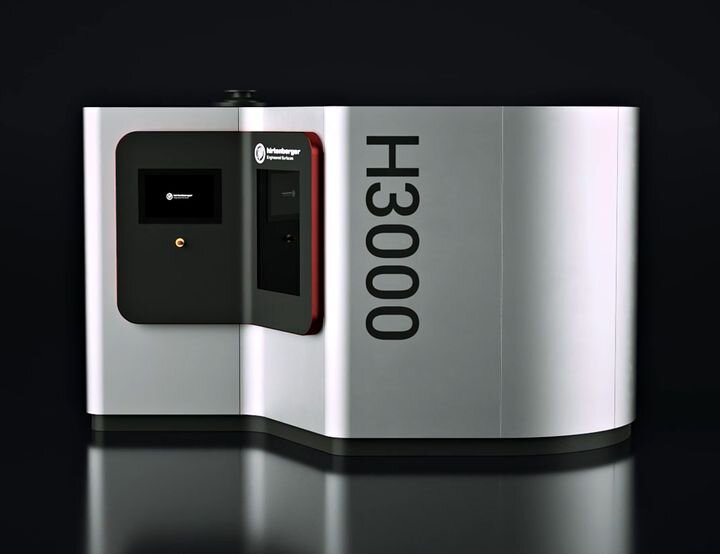![The H3000 Finishing Module [Source: Hirtenberger]](https://fabbaloo.com/wp-content/uploads/2020/05/image-asset_img_5eb050965e212.jpg)
Austria-based Hirtenberger offers an interesting post-processing system for metal 3D prints.
The company has been in operation since 2004 when they launched with only 10 staff, and focuses on the niche area of engineered surfaces. While they provide a wide array of related services to various industries in this area with around 2000 staff, they have also developed a solution for additive manufacturing they call “Hirtisation”.
They explain the process:
“Our newly developed Hirtisation technology is a powerful tool for treating 3D-printed parts. With it, sintered-on particles and support structures are removed and the surfaces smoothed. Our portfolio is supplemented by extensive options for process control, layer characterization and failure analysis. With Austria’s largest galvanic laboratory, we provide comprehensive services for surface engineering and the industrial implementation of new galvanic process solutions. Hirtisation is suitable for all metals and alloys commonly used in 3D printing. A fully automatic finishing module for Hirtisated 3D-printed metal parts makes the process highly efficient.”
How does Hirtisation work? A look at their video reveals much of the process as deployed on their H3000 Finishing Module:
A first stage seems to remove loose particles from the prints, which are typically buried in powder beds when 3D printing completes. It is extremely important to remove loose powder because many industry certifications require this. Imagine, for example, if a medical implant was to take place with loose powder still clinging to the implant.
At this stage in the video it appears that the support structures also dissolve away, as Hirtenberger says they offer “automated removal of support structures”. Of course, metal 3D printers definitely do not use soluble supports as is done in thermoplastic 3D printing. However, it may be that the chemists at Hirtenberger have developed a solution that can weaken thin structures — which supports typically are — and thus remove them.
If that is the case, then there may be a limitation in that thin structures may not be suitable for use in Hirtenberger’s post-processing system. However, we’ll have to ask the company at the next opportunity to find out more.
The next stage in Hirtisation is to smooth the surface. It’s not clear what process is being used here, chemical, mechanical or both, but the result is smooth surfaces.
A final stage cleans and vacuum-dries the parts for end-use. The entire process is said to be complete between 10 to 180 minutes, depending on the size and nature of the parts.
Currently, the H3000 can handle titanium parts only, but the company is quickly developing options for aluminum, stainless steel and inconel.
The H3000 Finishing Module can accept parts up to 300 x 300 x 100 mm in size, as long as the weight is less than 9kg.
What’s interesting is that this is an integrated system where the freshly 3D printed parts need only be dropped into the input side of the H3000, and the rest of the action takes place automatically. Hirtenberger says the H3000 can be operated “by personnel without special education”.
Automatic finishing, particularly on metal 3D prints, is highly desirable as the normal post processing steps are typically quite manual and thus expensive and open to human error. The H3000 should provide a way to achieve highly consistent surface results.
Via Hirtenberger

